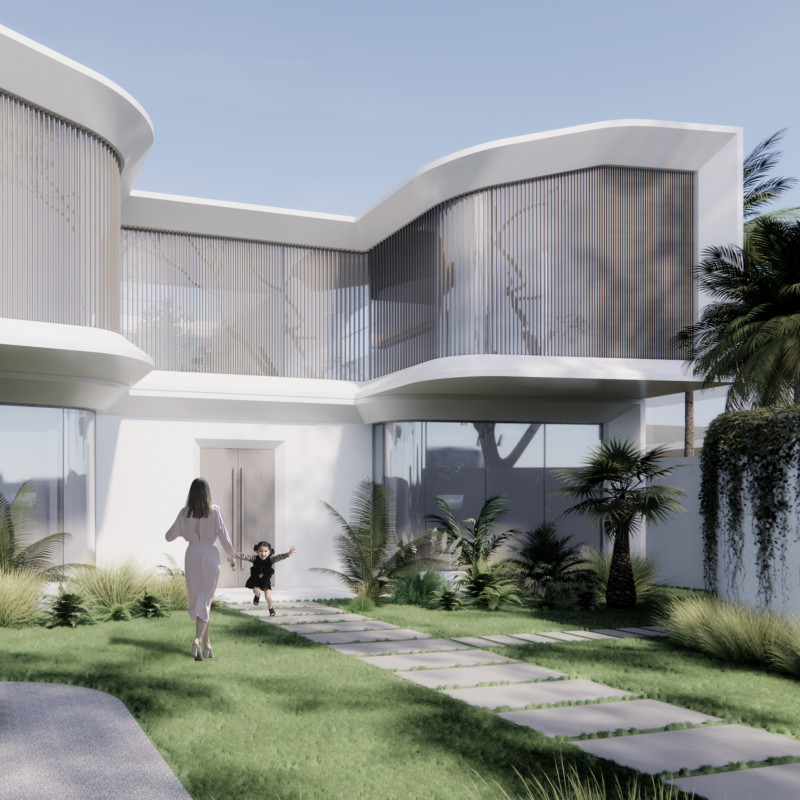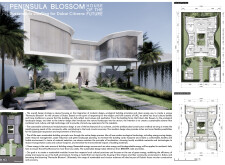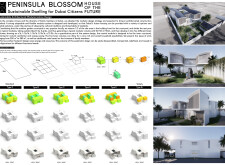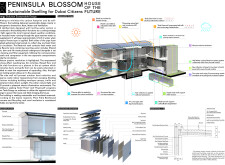5 key facts about this project
## Project Overview
Peninsula Blossom is a sustainable residential development located in Dubai, designed to meet the needs of contemporary Emirati families while integrating local cultural values and advanced ecological practices. The project intends to provide a durable and adaptable home, reflecting modern technological advancements and a commitment to environmental stewardship.
### Modularity and Spatial Strategy
The architectural design adopts a modular approach, allowing for various spatial configurations that accommodate diverse family structures. The layout features multiple unit types (Type A through Type E+), enabling functions ranging from multifamily living arrangements to private retreats. Key design elements include expansive living areas that encourage interaction and large glass openings that promote natural light and connection to the outdoors. The central courtyard serves as a communal gathering space, enhancing natural ventilation and reinforcing community ties.
### Environmental Considerations and Materiality
The project's sustainable focus is evident in its utilization of renewable energy sources and passive design strategies. Key features include the integration of Tesla solar panels for energy self-sufficiency, rainwater collection systems, and advanced ventilation techniques that minimize reliance on mechanical cooling. The material selection underscores sustainability, using locally available resources such as palm fiber reinforced concrete for thermal efficiency, laminated glass for transparency and reduced thermal gain, and bamboo for biophilic design elements. This combination of materials not only enhances the durability and aesthetic quality of the structure but also aligns with the project's overarching environmental goals.





















































